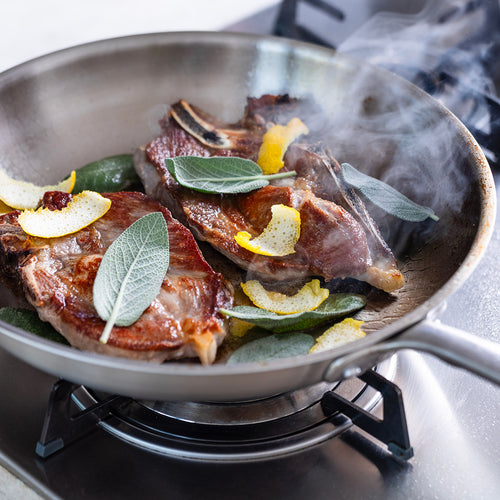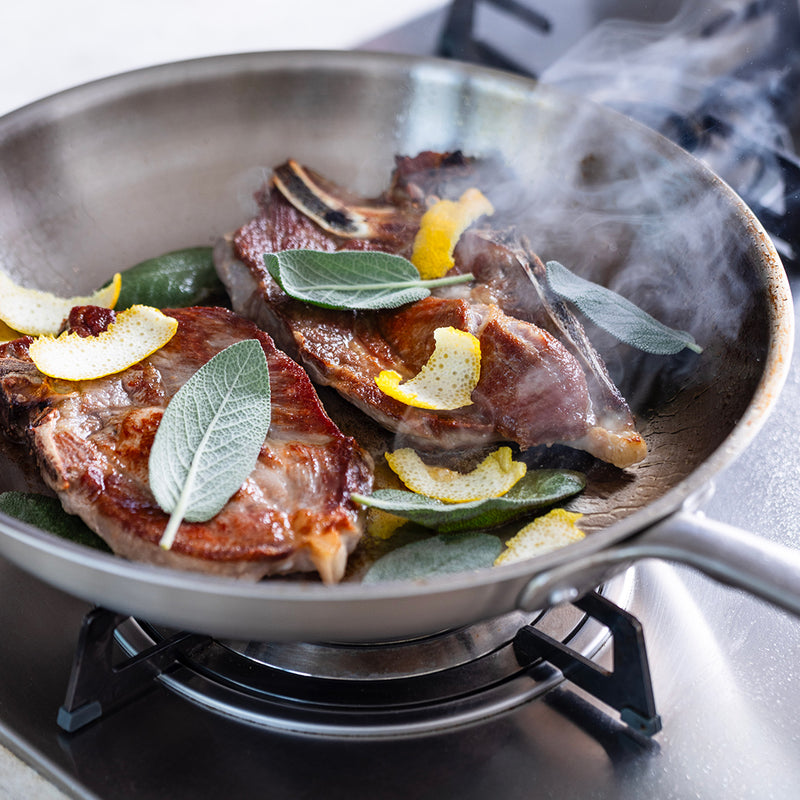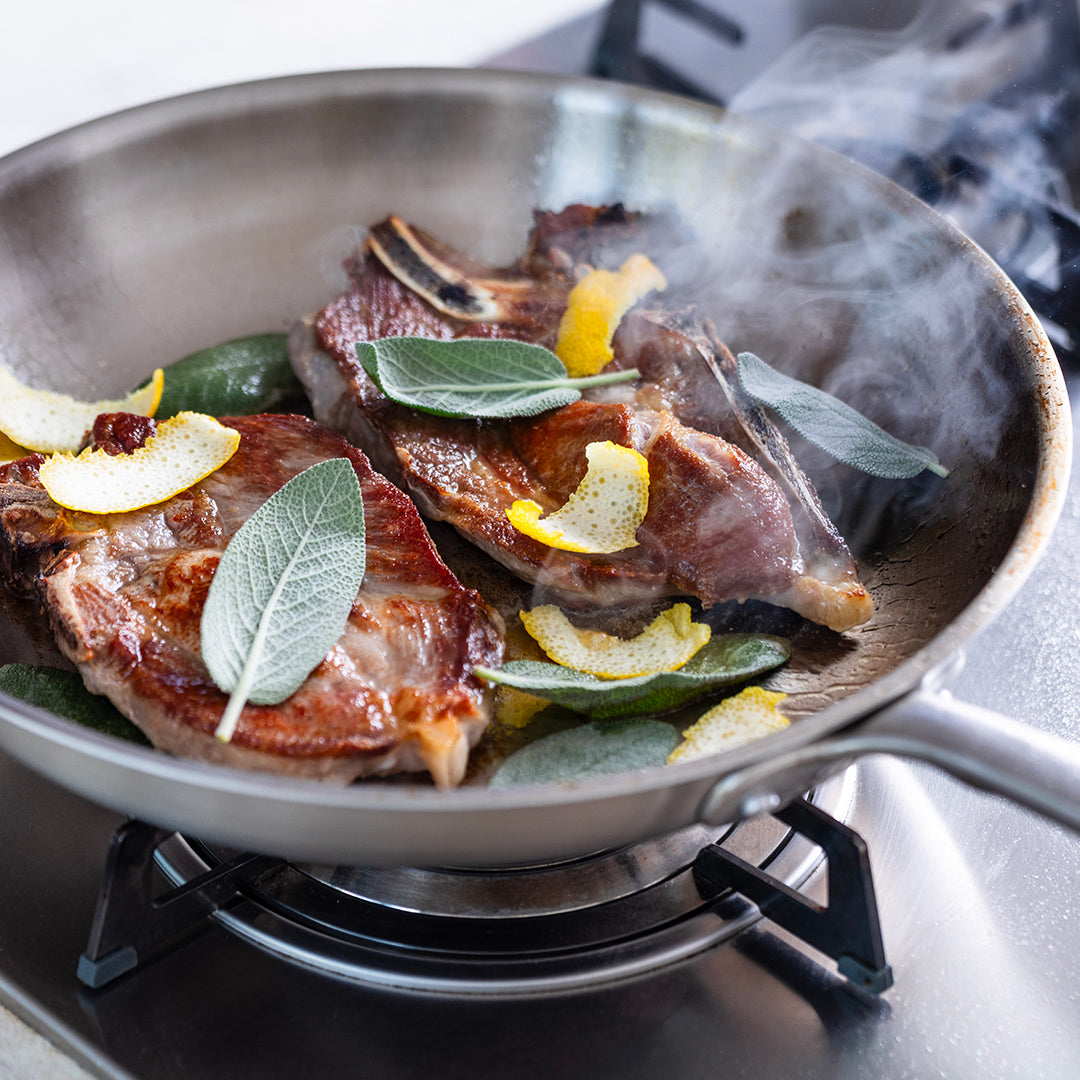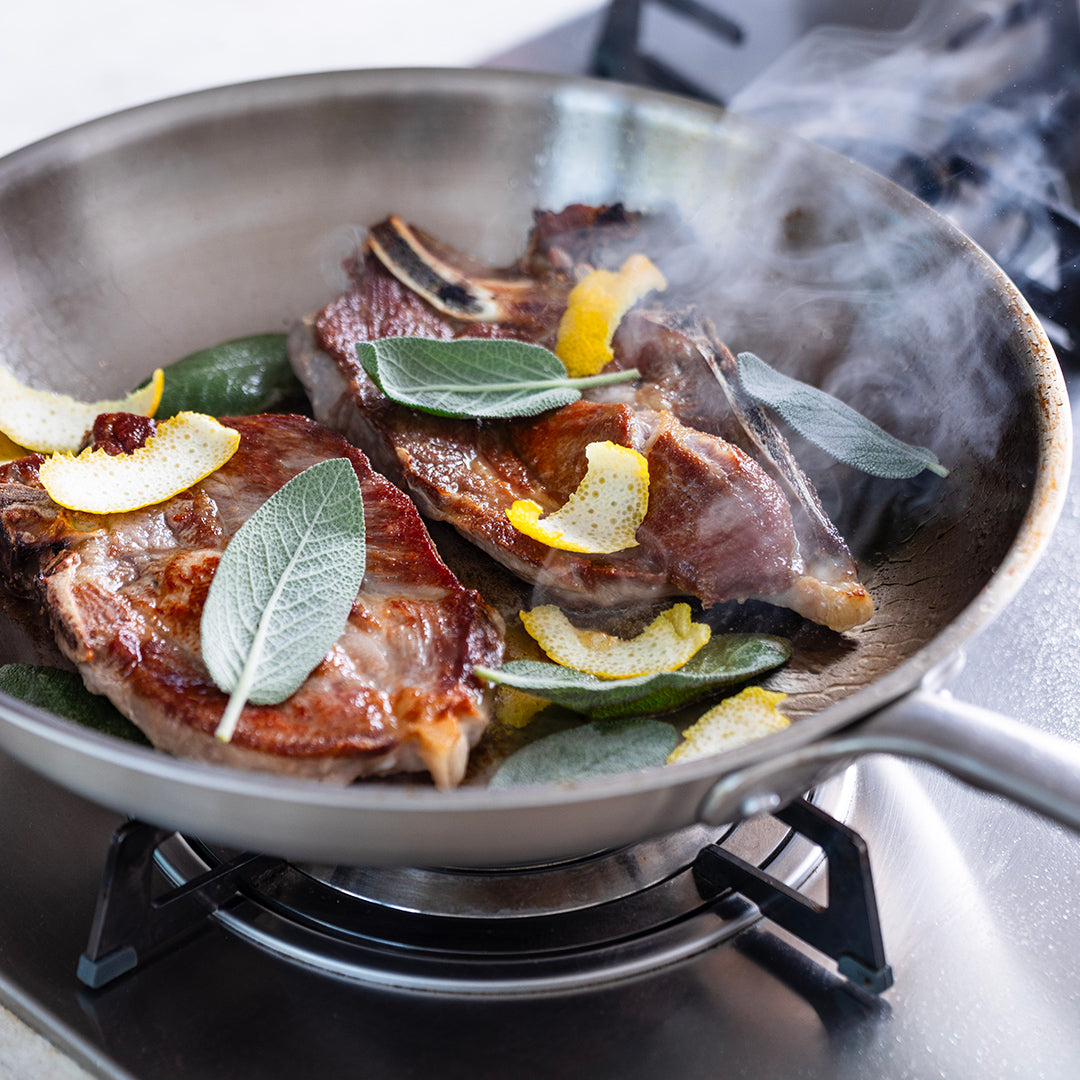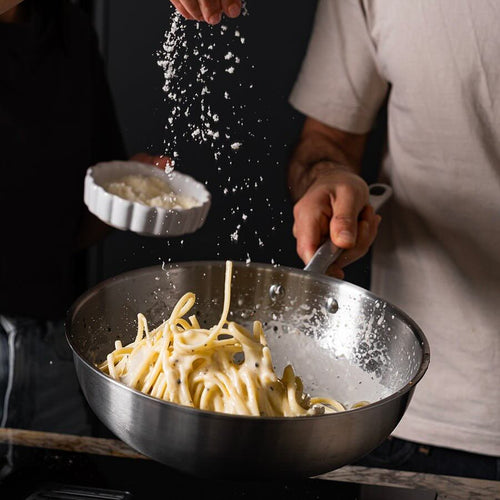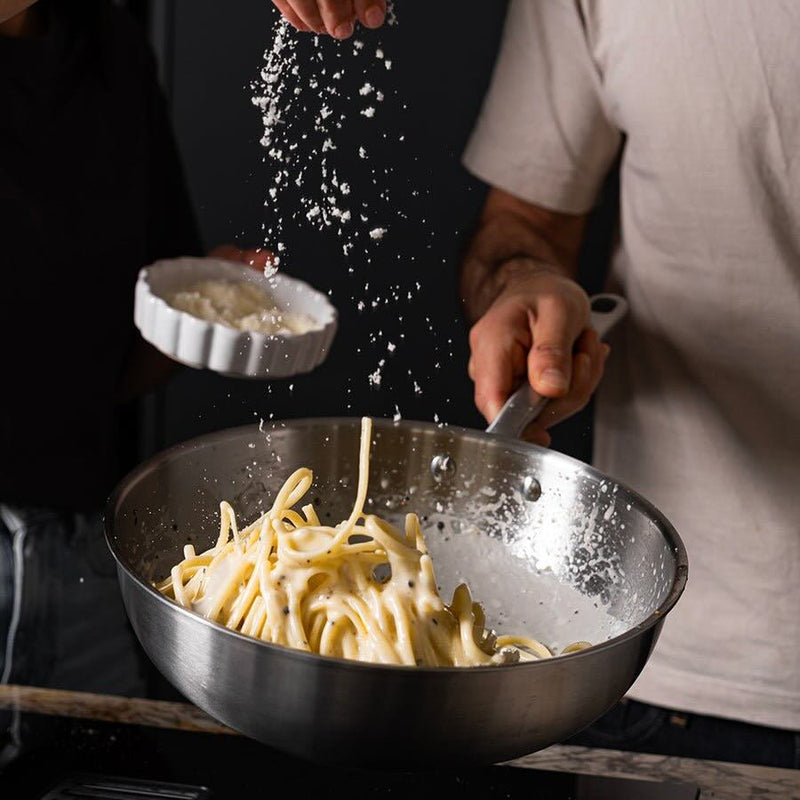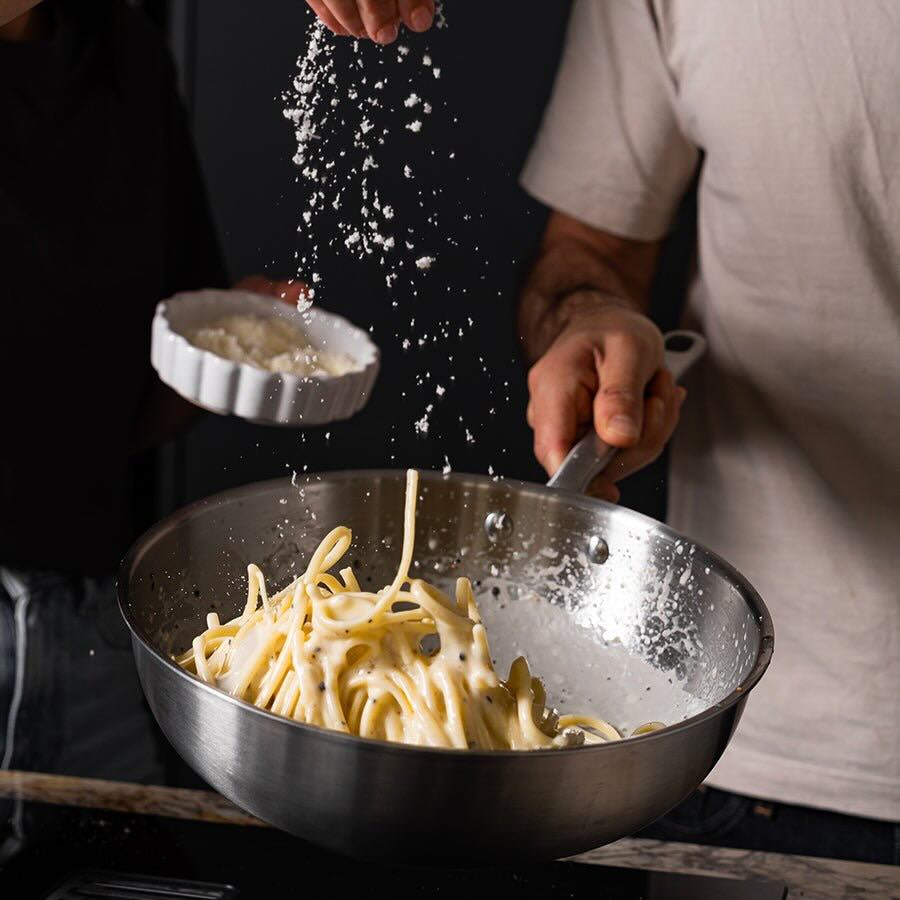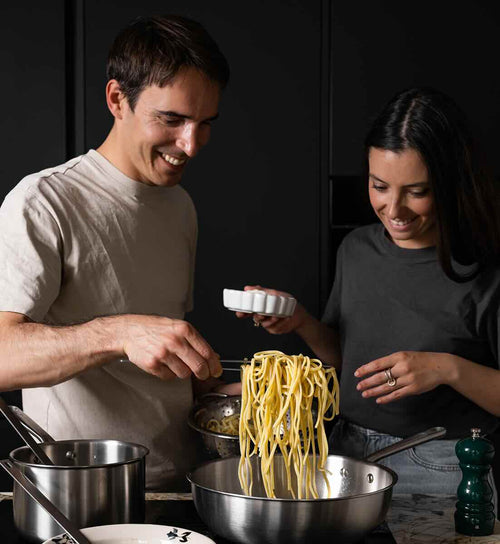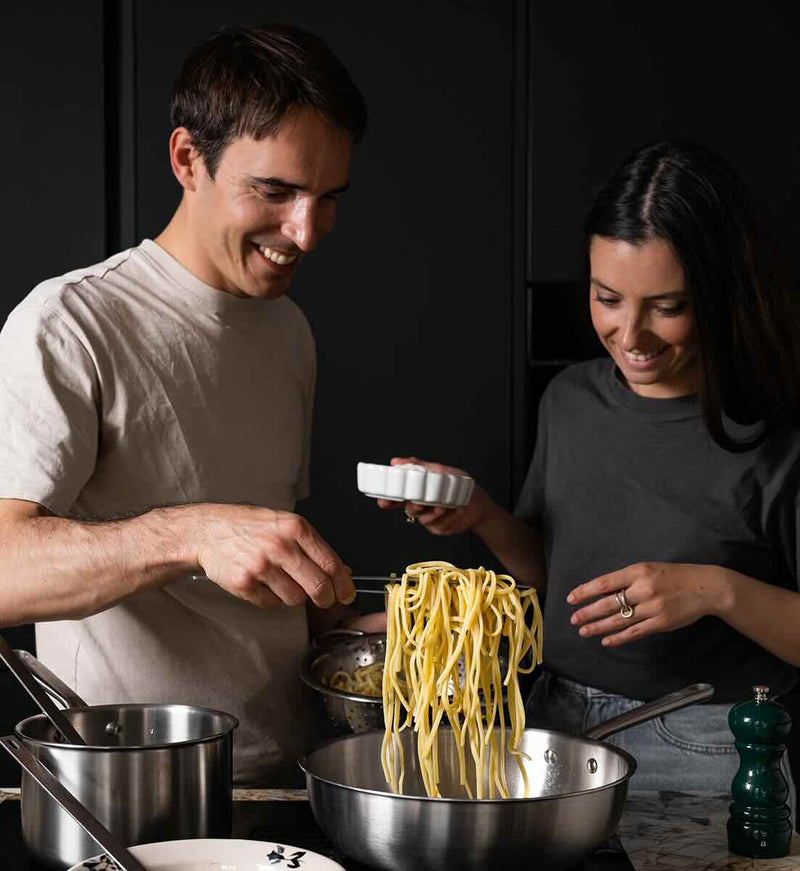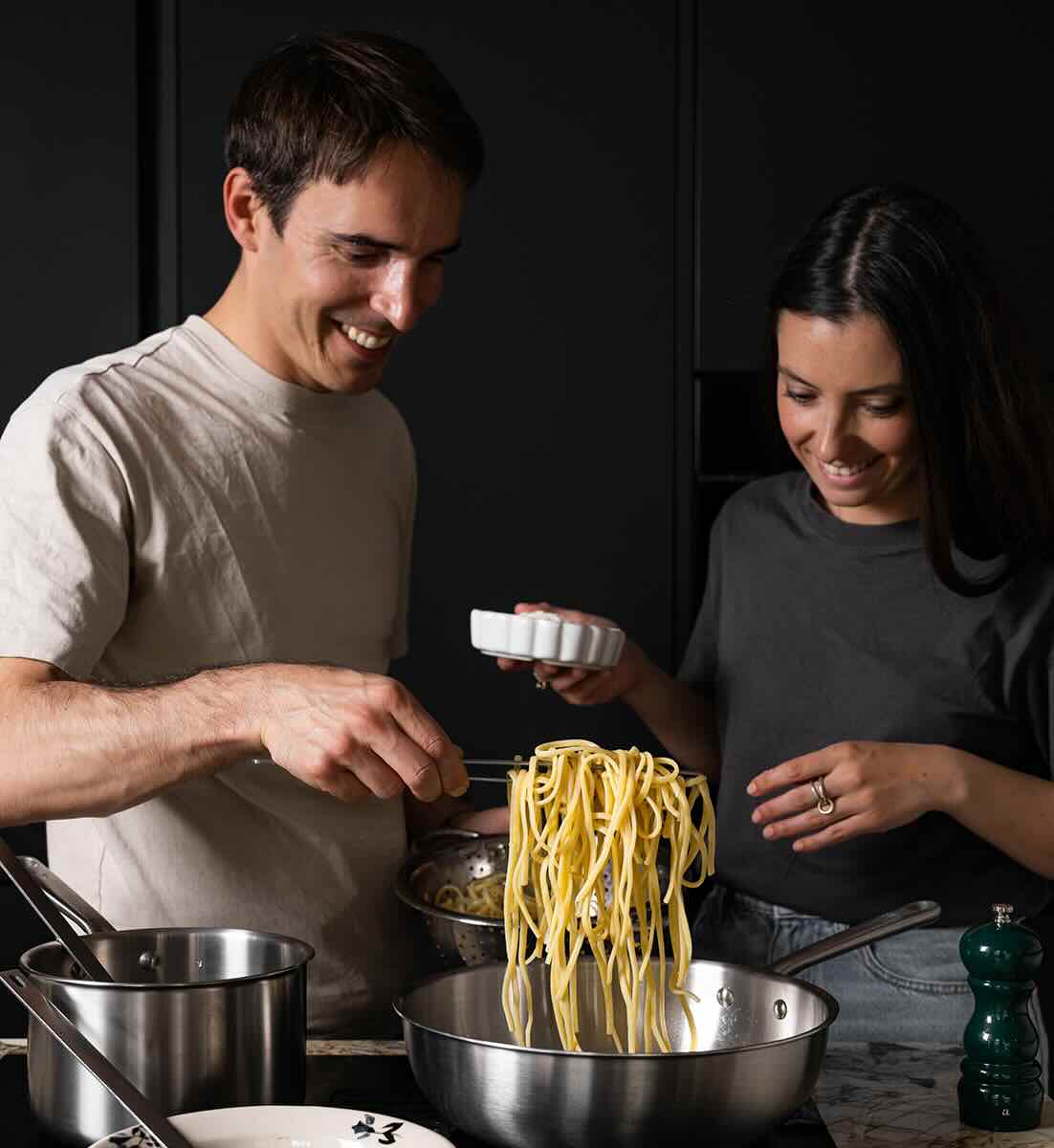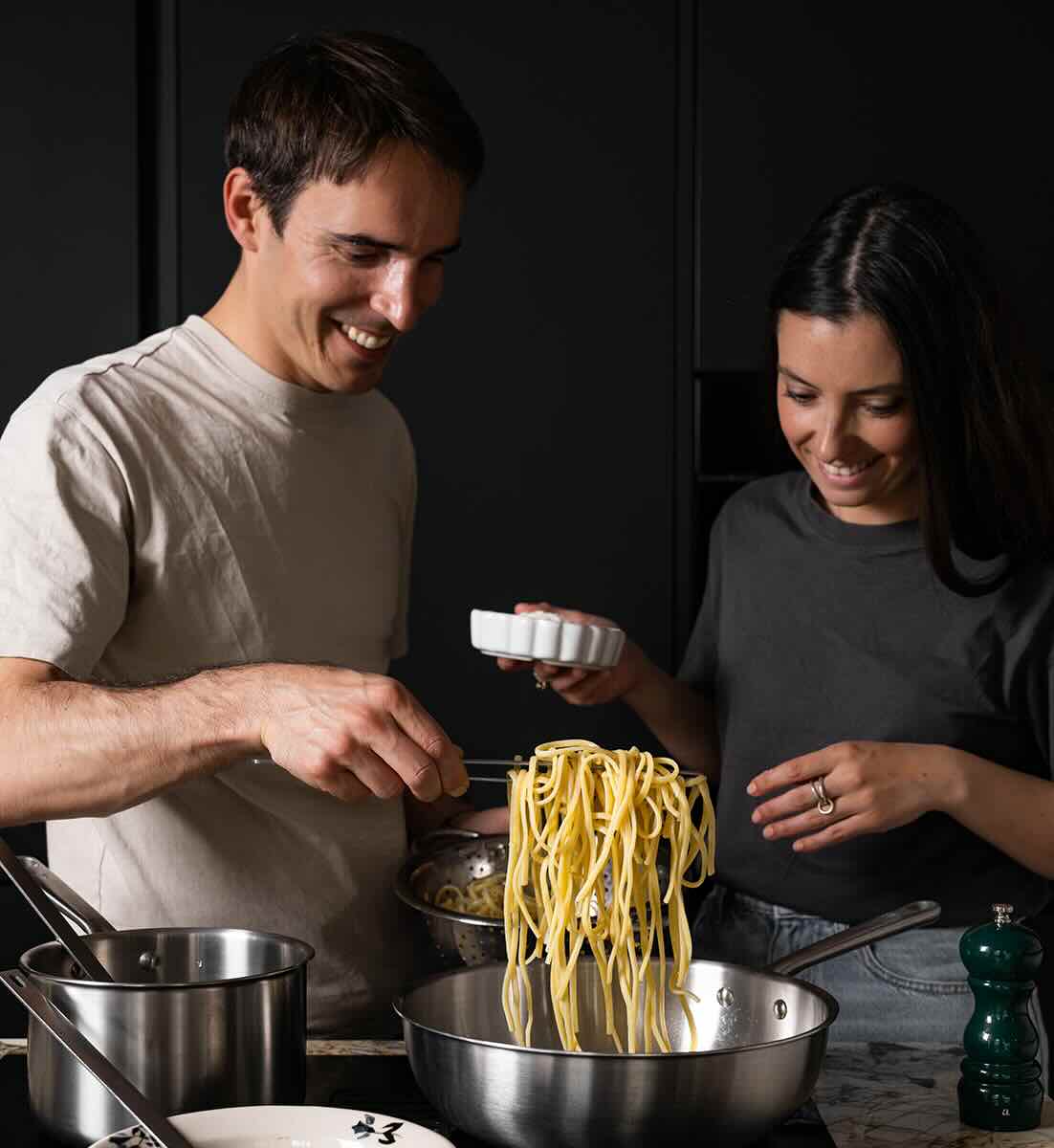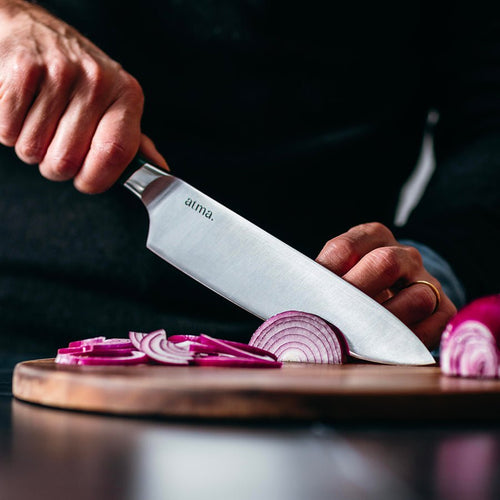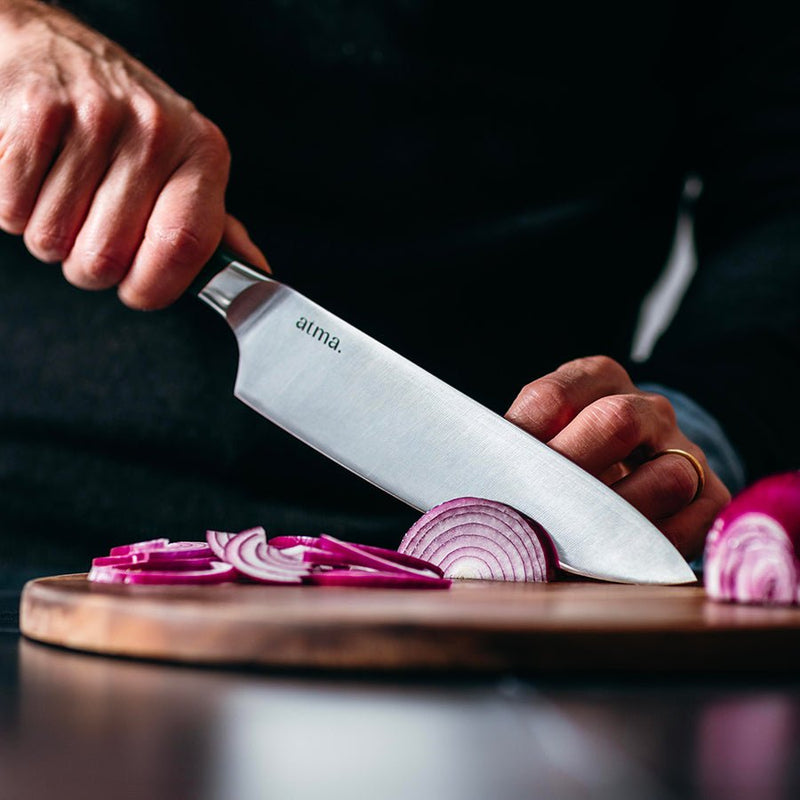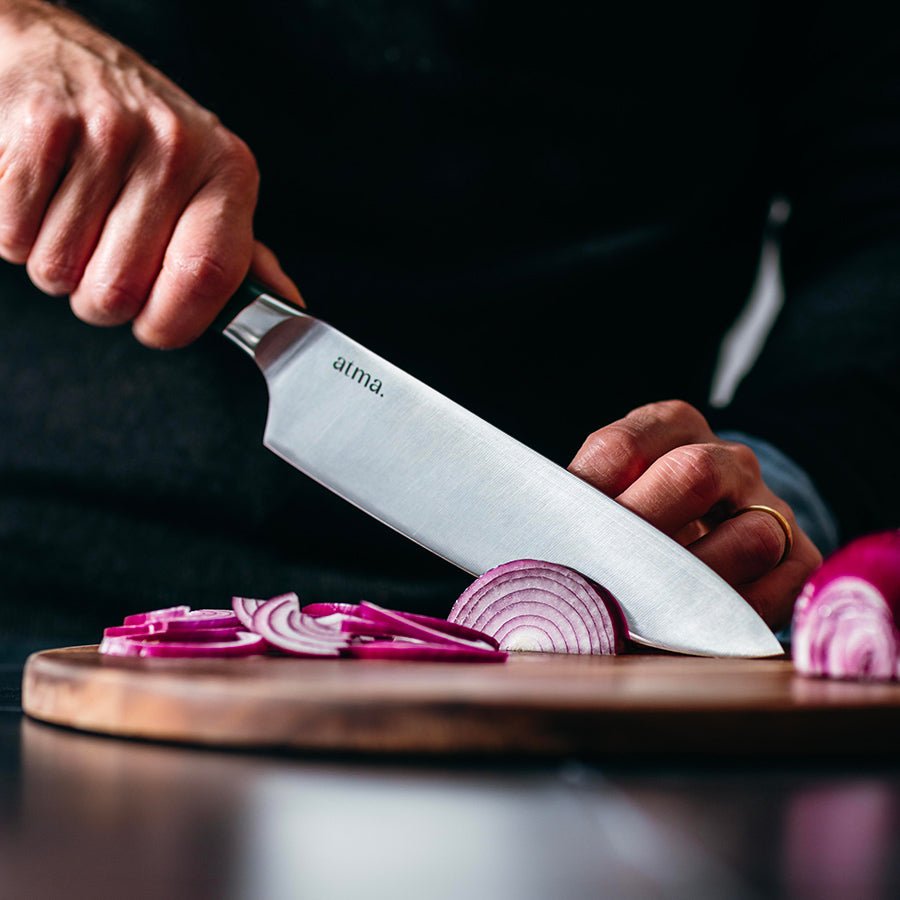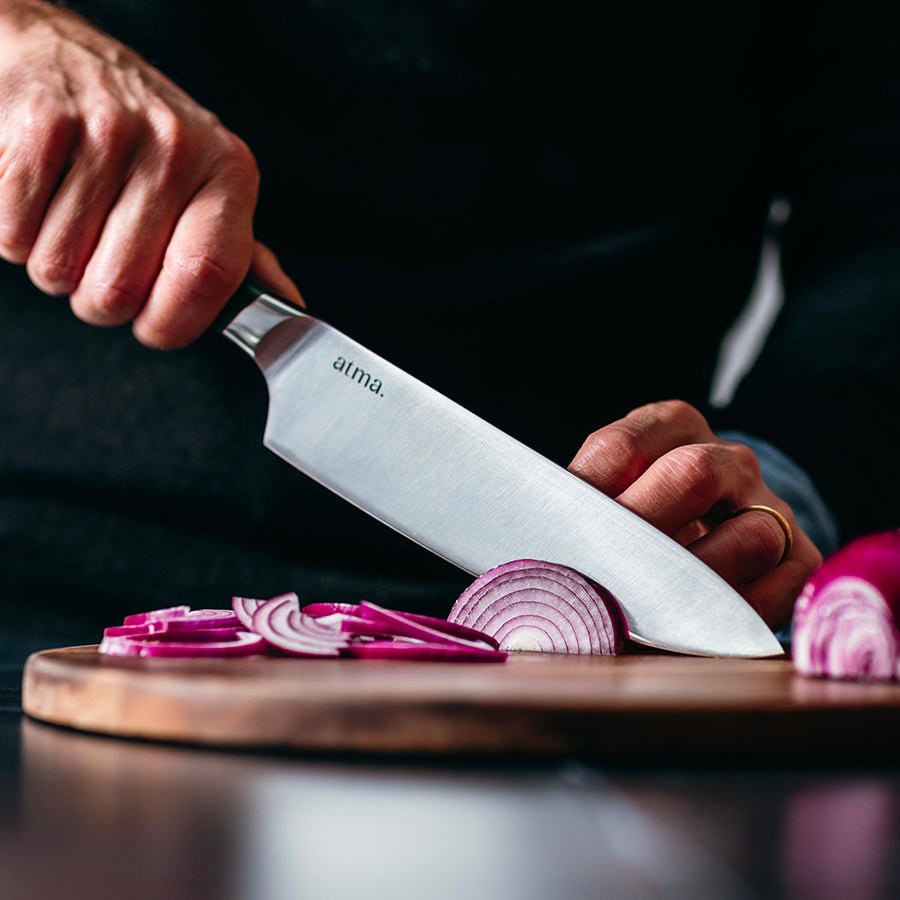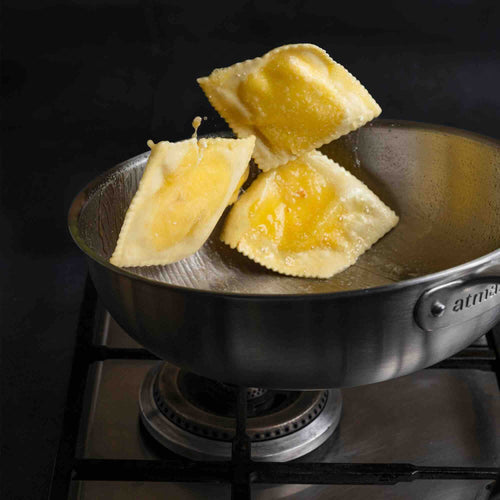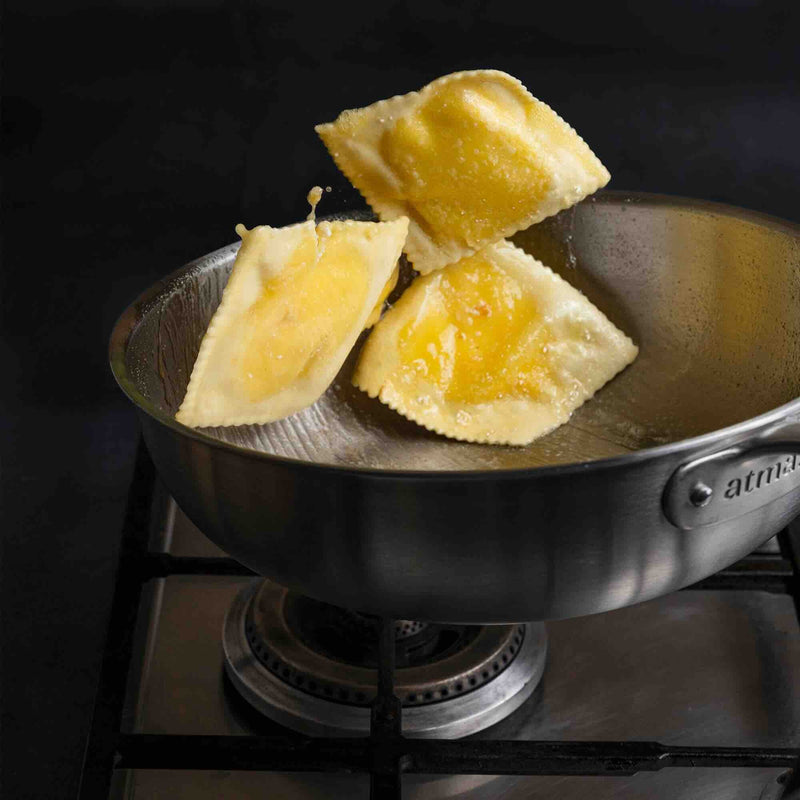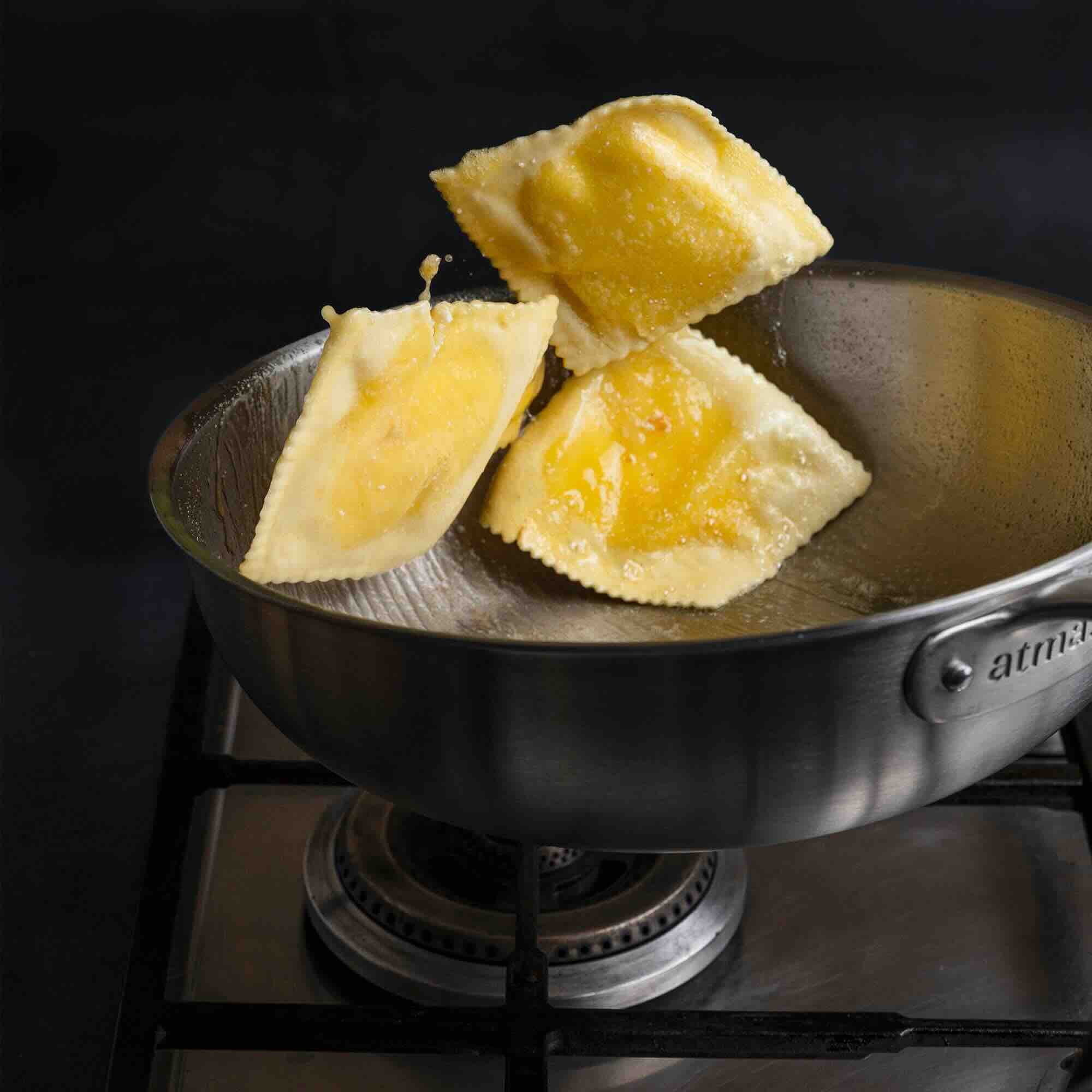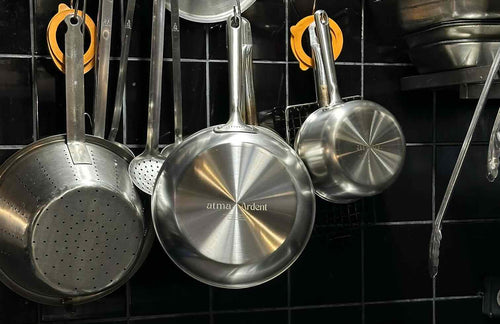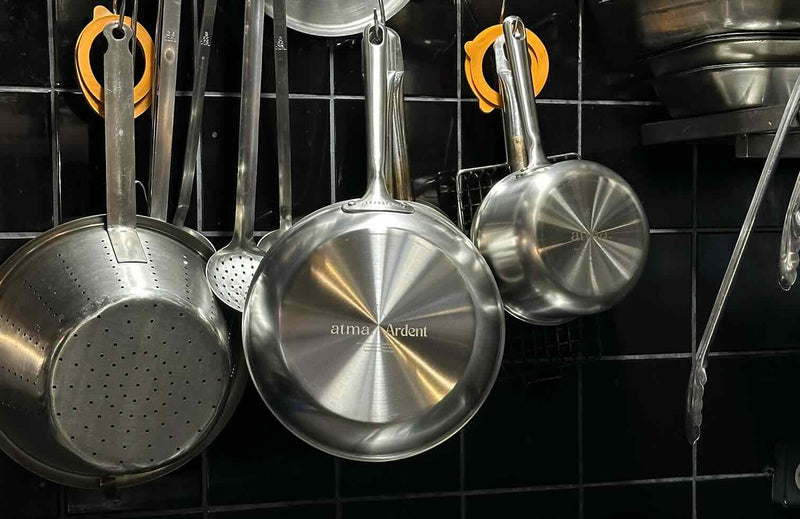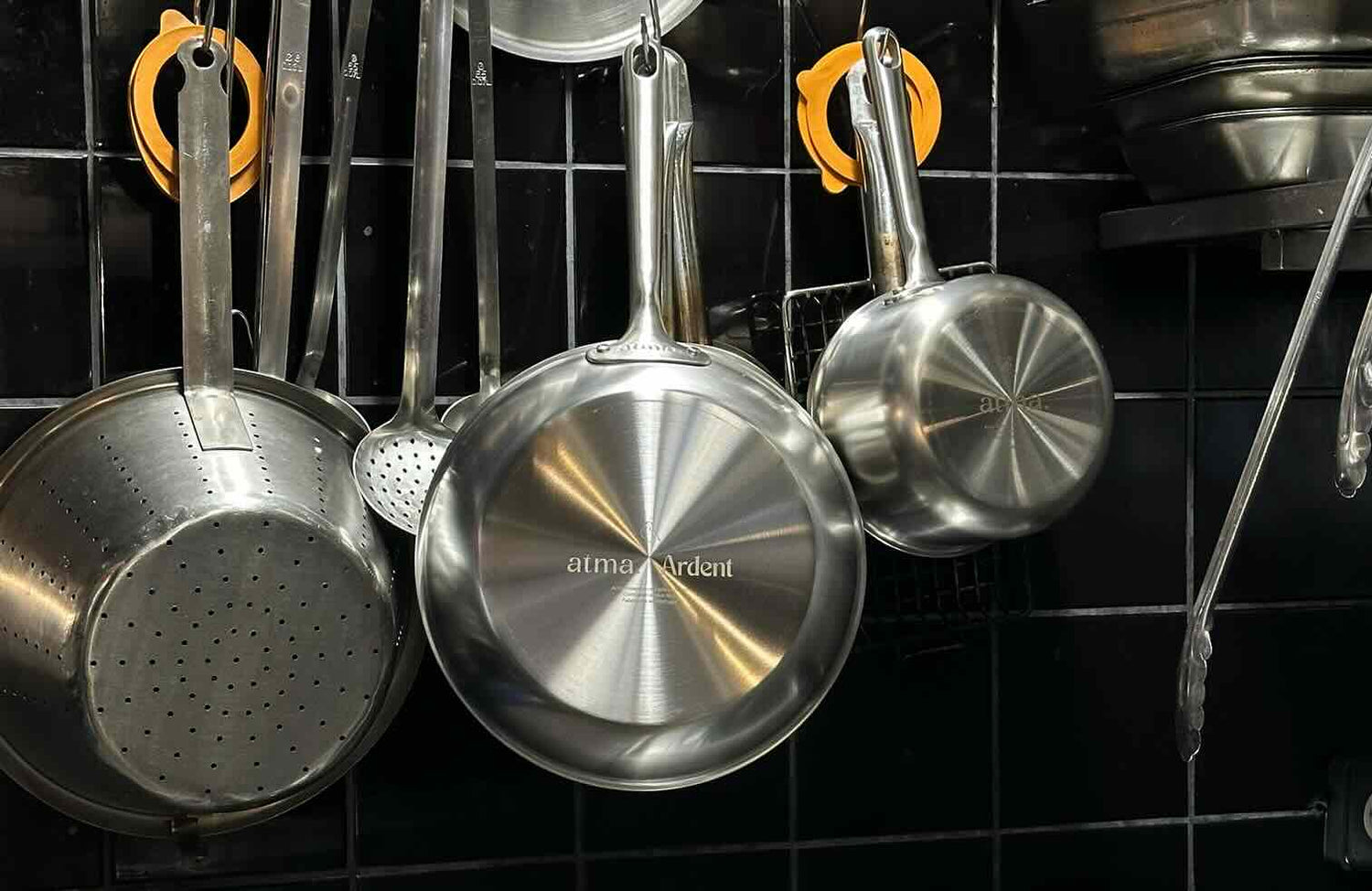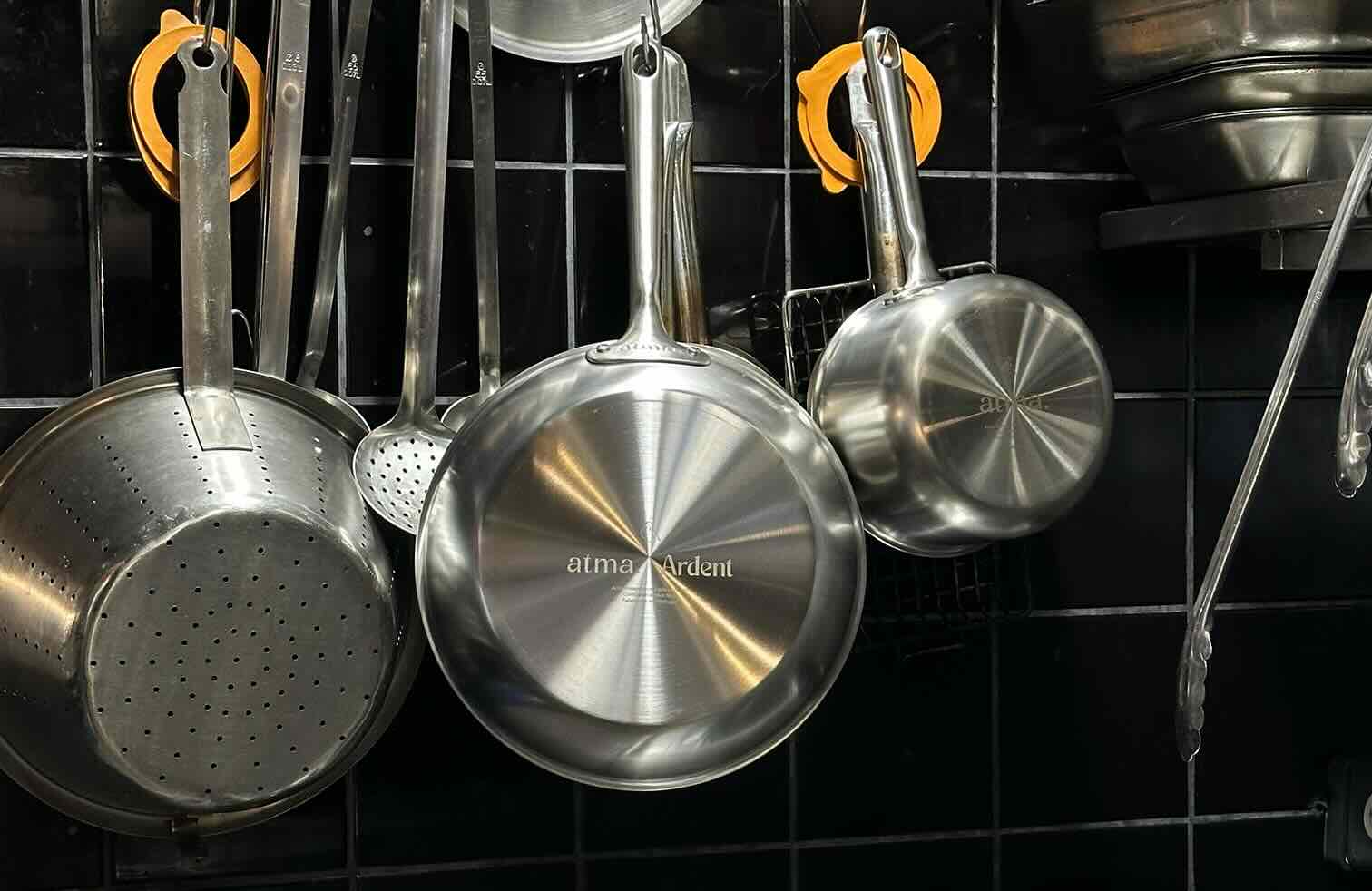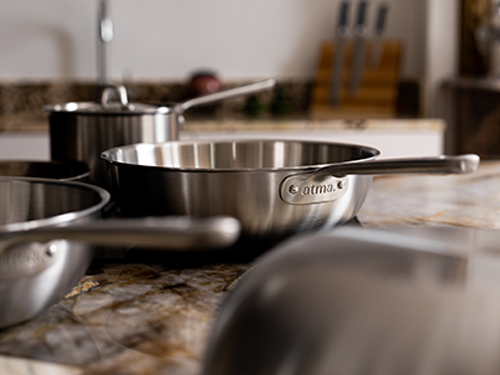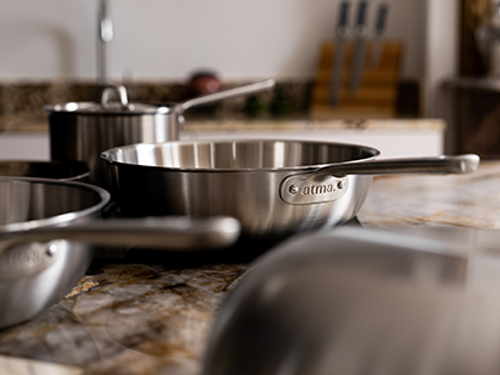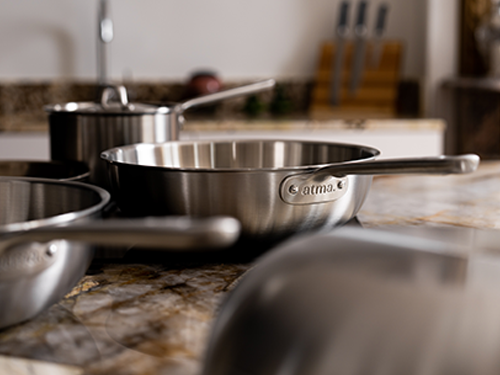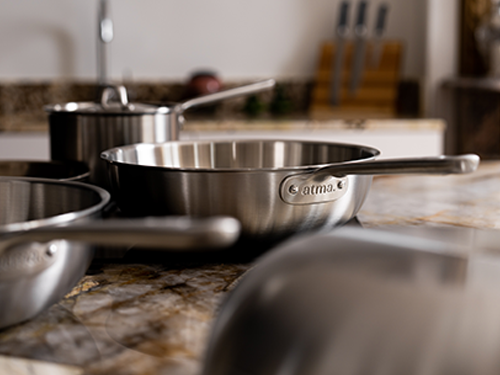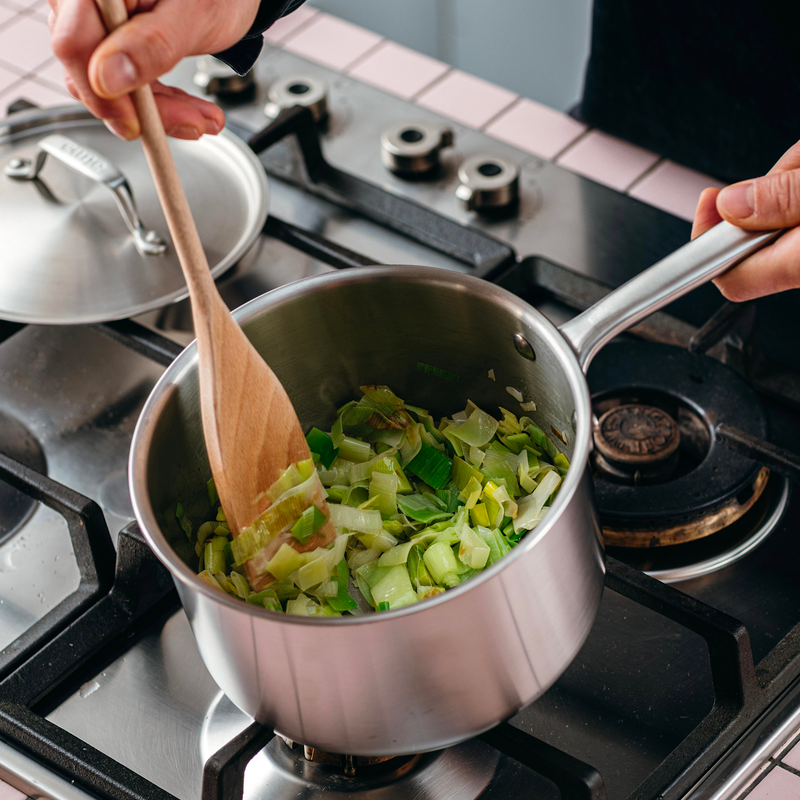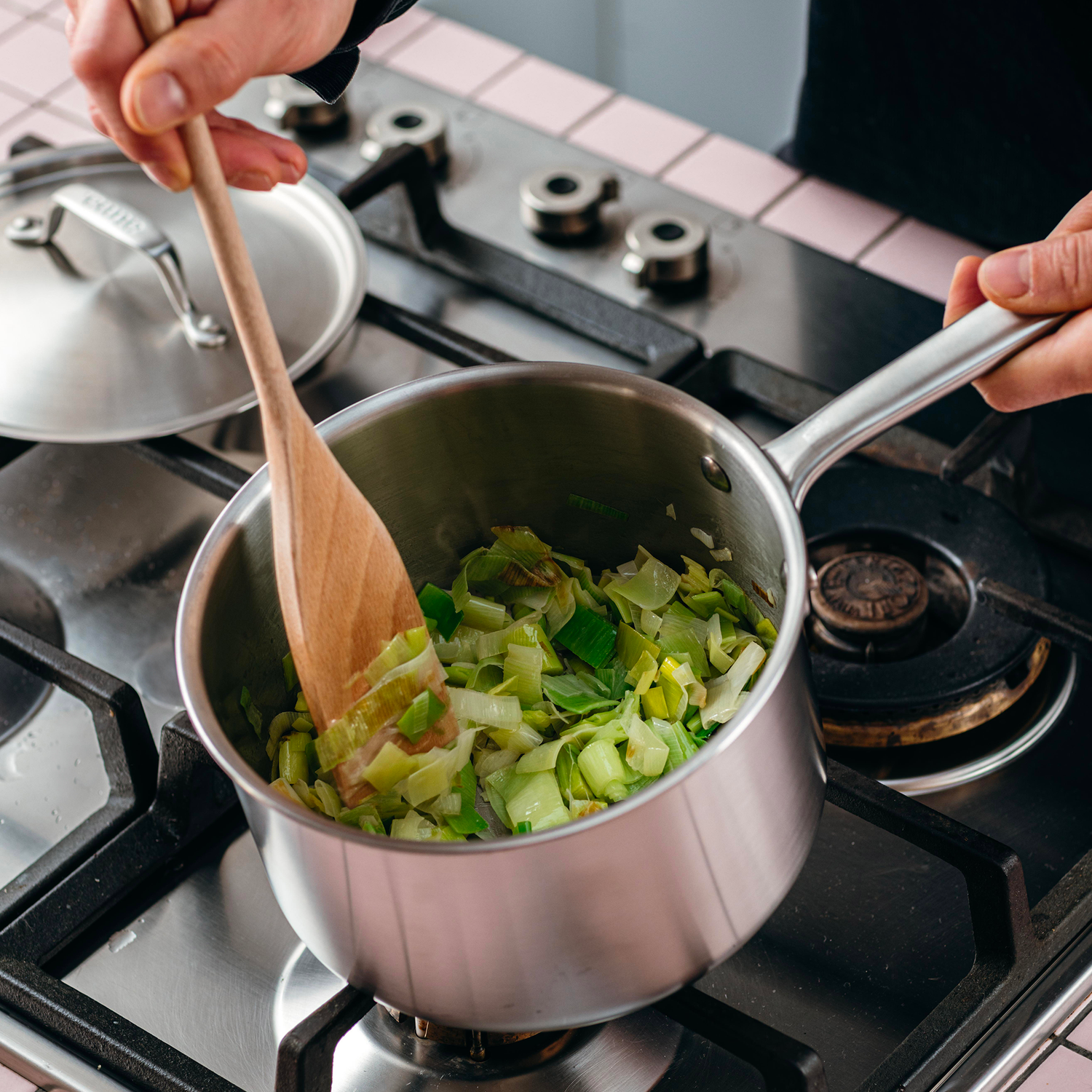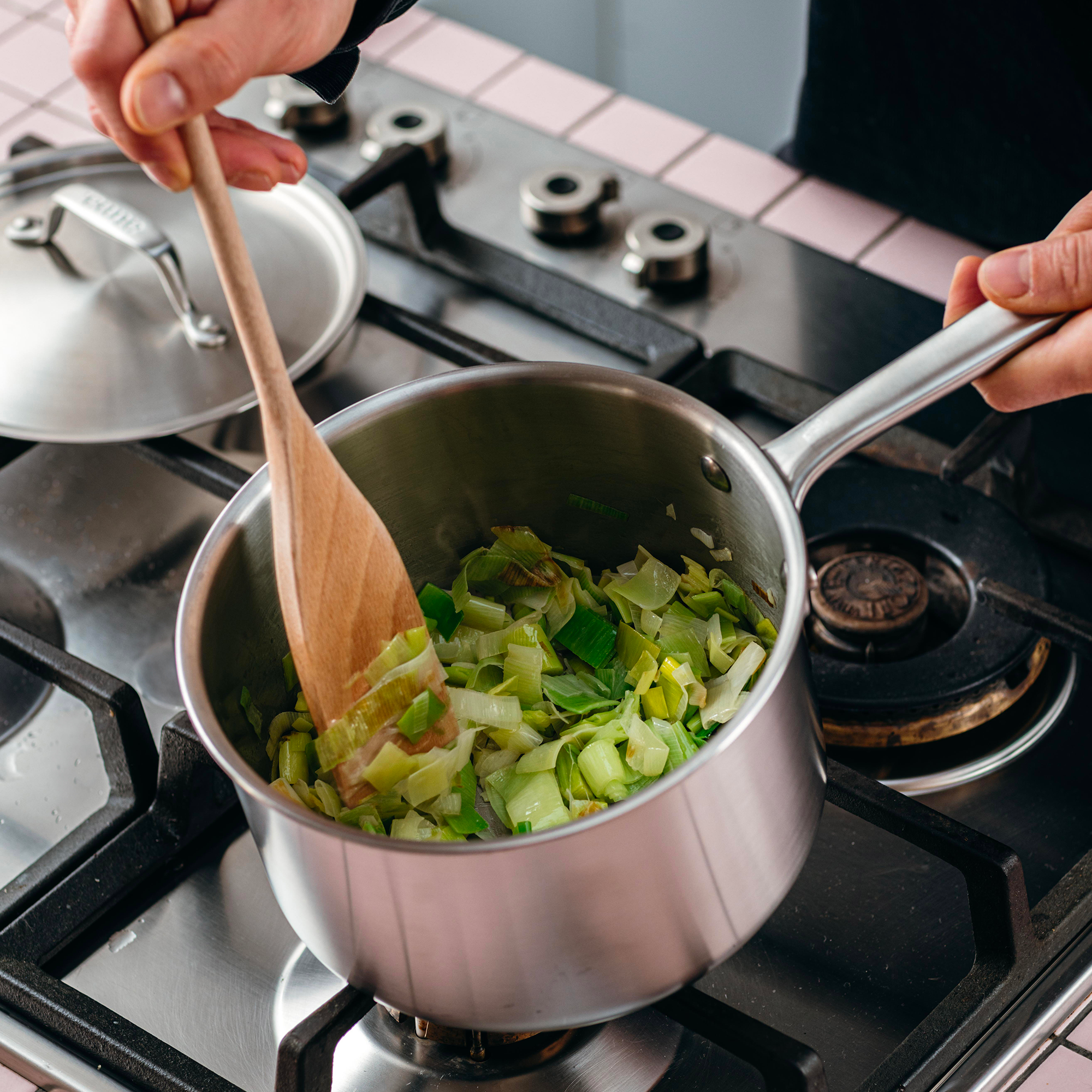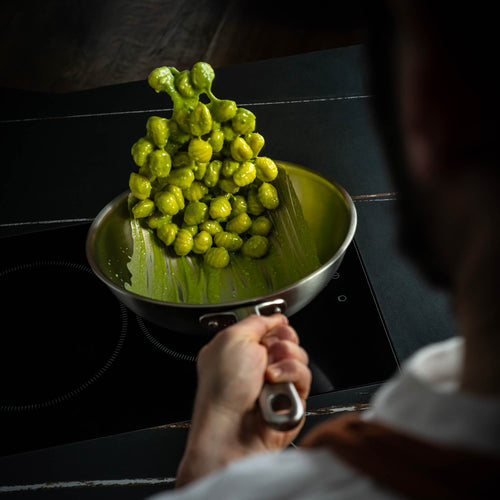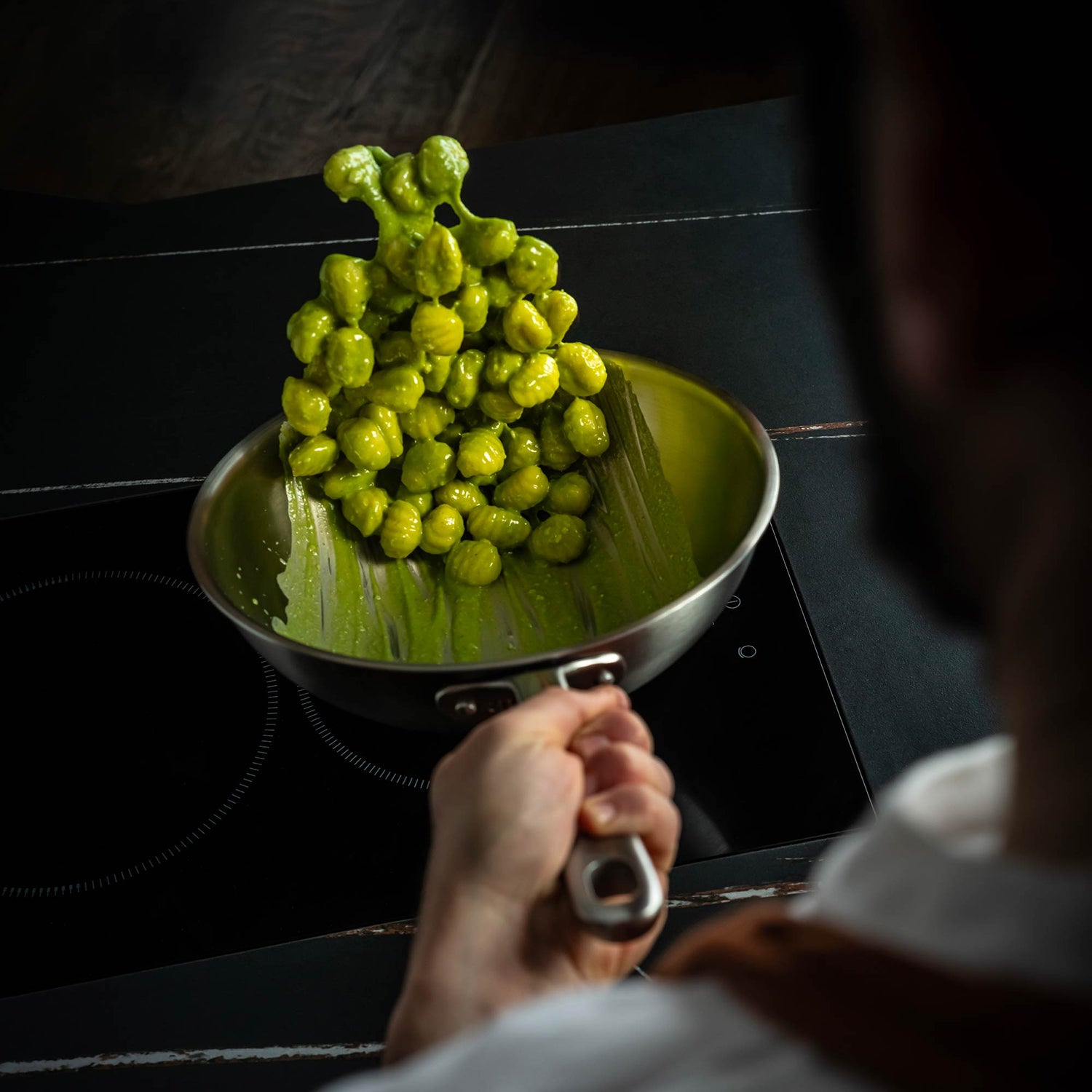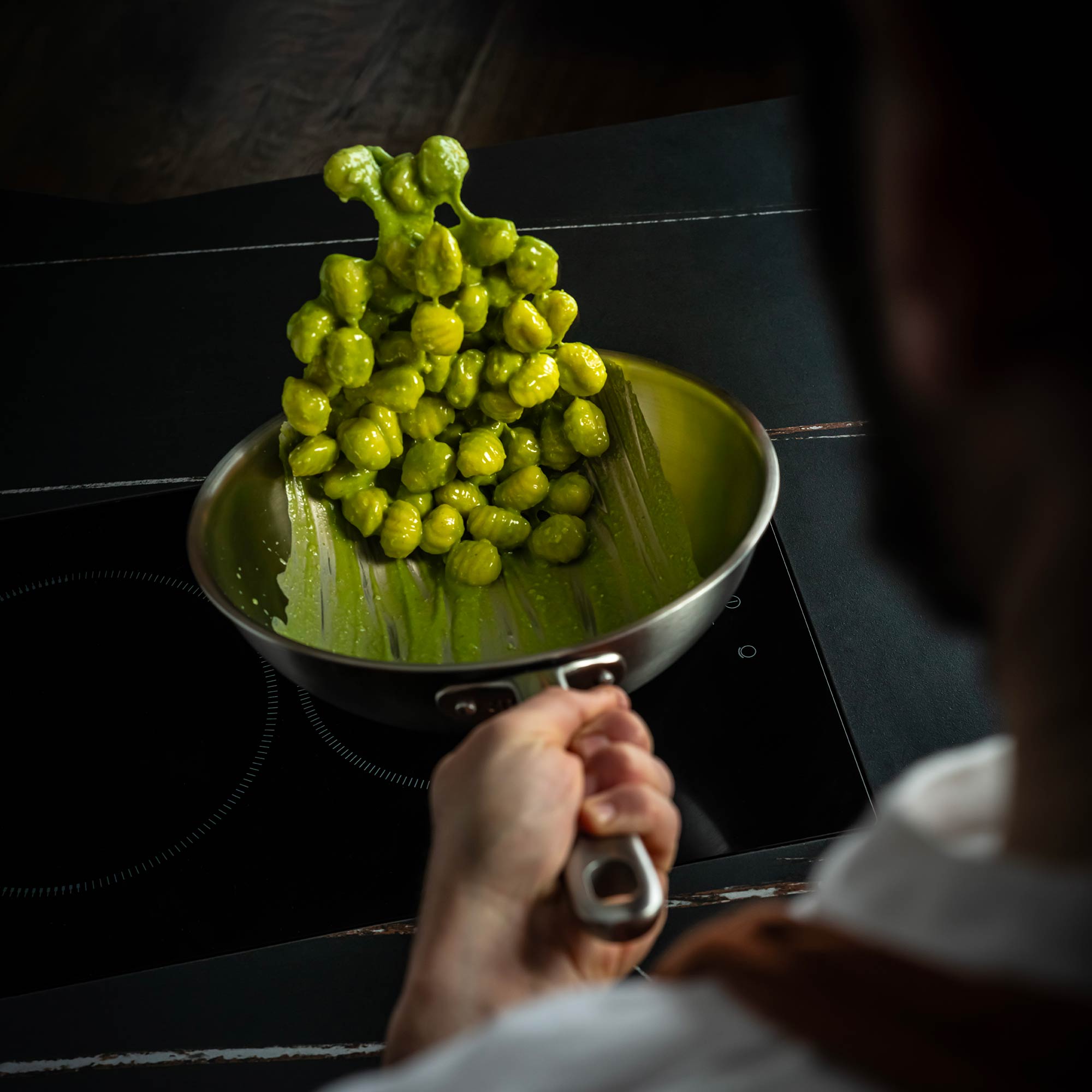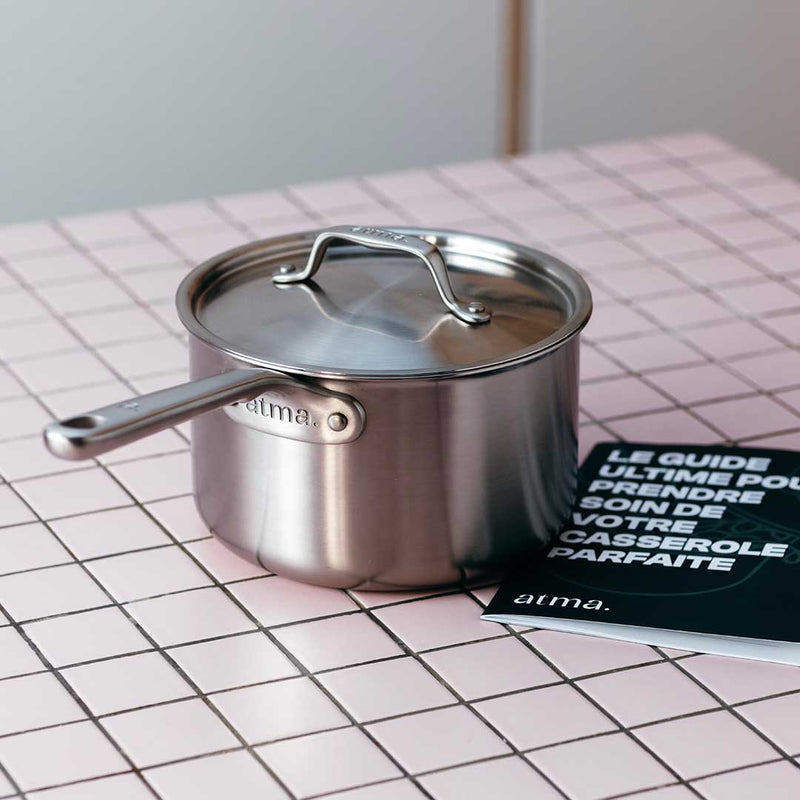18/10 stainless steel: what is it?
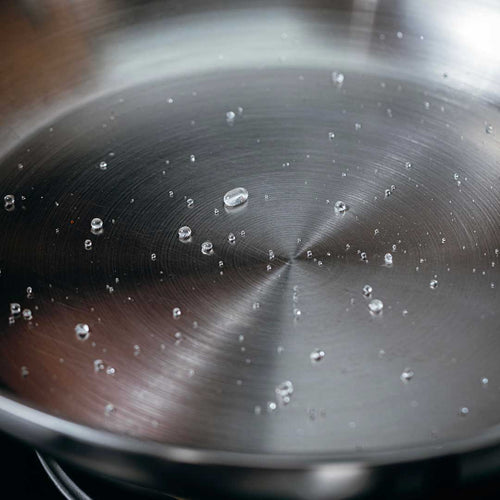
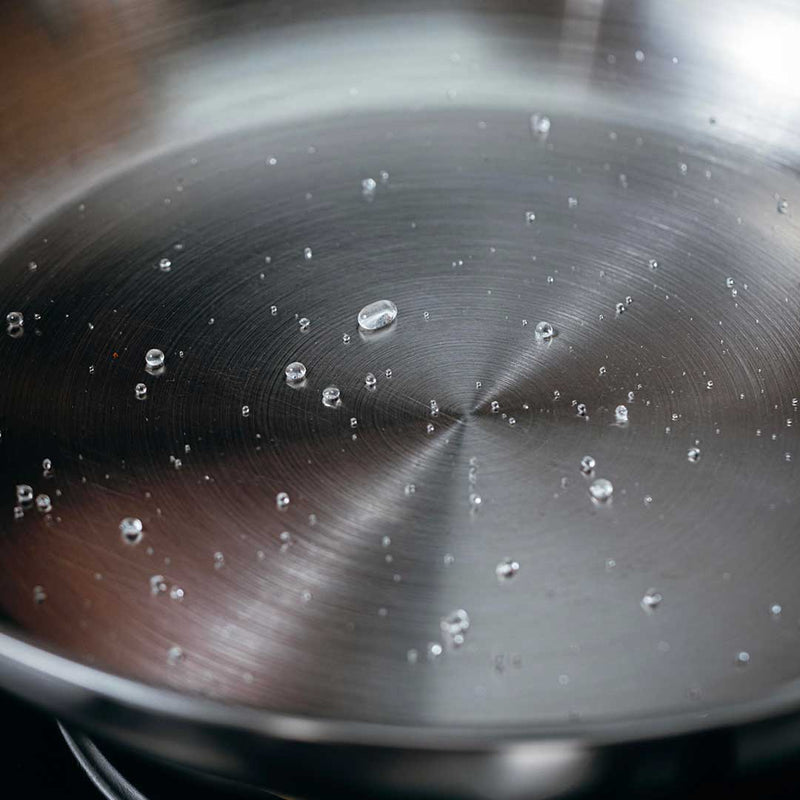






What do we like best about Atma? The use of 18/10 3-ply stainless steel for the production of our stainless steel cookware!
Composition and characteristics
18/10 stainless steel: what is it?
This is a type of stainless steel characterized by Made from 10% nickel and 18% chromium. This combination of materials makes 18/10 stainless steel a highly prized material among amateur and professional cooks!
Chromium creates a protective surface on stainless steel, improving its resistance to corrosion. Nickel also strengthens the steel's strength, allowing it to withstand shocks more effectively.
At Atma, we have chosen to use 18/10 stainless steel for the manufacture of our cookware: fragments, fragments, woks, stewpans and saucepans are among our products made from this stainless steel with its many qualities! Bonus point: our stainless steel is made using the 3-ply method. Our utensils therefore include an outer layer of ferritic stainless steel, a layer of aluminum, then a layer of 18/10 stainless steel. This is to ensure strength, durability, and optimal heat conduction.
The physical and chemical properties of 18/10 stainless steel
To get into a little more technical detail, this material has numerous properties, both chemical and physical, that are particularly useful in the culinary field:
-
Excellent resistance to Corrosion
-
Very good resistance to oxidation
-
No food spoilage: 18/10 stainless steel withstands a wide pH range, thus preserving flavors and nutrients
-
Excellent resistance to very high temperatures: it is therefore perfect for culinary applications!
Common Uses of 18/10 Stainless Steel
The range of uses for 18/10 stainless steel is very broad! While at ATMA, we love using it to create the perfect stainless steel frying pan or a highly durable sauté pan, this material can also be used in many other applications. 18/10 stainless steel saucepans, stainless steel cutlery, faucets, food containers, various tableware... 18/10 stainless steel is even used in the pharmaceutical industry!
Advantages and disadvantages of 18/10 stainless steel
The advantages of this material
Quality and durability are undeniable with 18/10 stainless steel. In addition to its resistance to corrosion and impact, as mentioned above, this material also boasts other qualities:
18/10 stainless steel withstands repeated and intensive use without any problems or risks. This material is easy to maintain and is dishwasher safe. The alloy of materials gives the steel 18/10 stainless steel, a beautiful, shiny silver shade, very aesthetic 18/10 stainless steel withstands cooking at very high temperatures It is ideal for making pots, pans, sauté pans, and woks compatible with all heat sources (yes, even induction!) In reality, this type of material, which combines the advantages of a significant percentage of chromium, stainless steel, and a good nickel content, has few drawbacks... And few of these drawbacks can't be easily avoided! For example, stainless steel pieces are known for conducting heat poorly: a small flaw quickly corrected by the presence of a layer of aluminum, an excellent conductor material, in the manufacture of our cookware. Generally speaking, 18/10 stainless steel cookware is more expensive than other types. But this small drawback is quickly compensated for by its incredible strength and excellent durability! Also, 18/10 stainless steel is known for being difficult to use, but all you need to do is adopt a new cooking technique! Simply heat your pan (for example) to 2/3 of your hob's maximum power. Do this until small drops of water on its surface roll like marbles. Then, you can add your fat and reduce the heat to 1/3 of its power. Your pan will no longer stick—it's magic! To learn more, we explain everything in our article on how to cook in stainless steel pans. So, are you ready to make the switch to food-grade stainless steel and revolutionize the way you cook?
Potential Disadvantages of 18/10 stainless steel
Discover our best sellers
By Carla Chassagne








